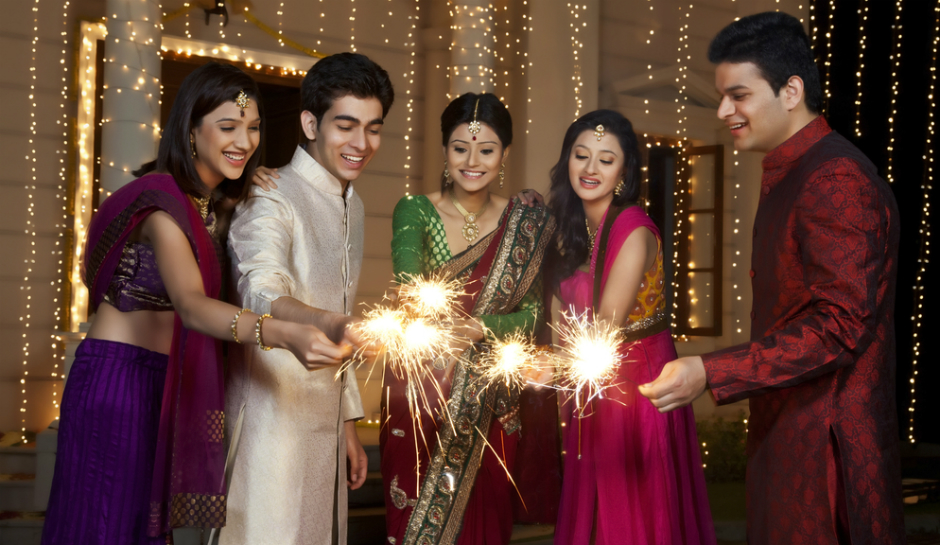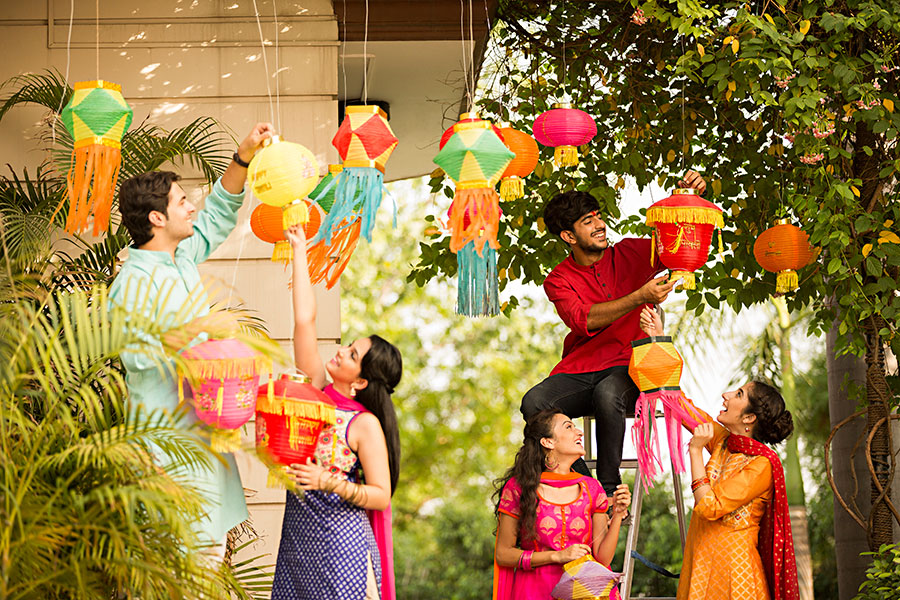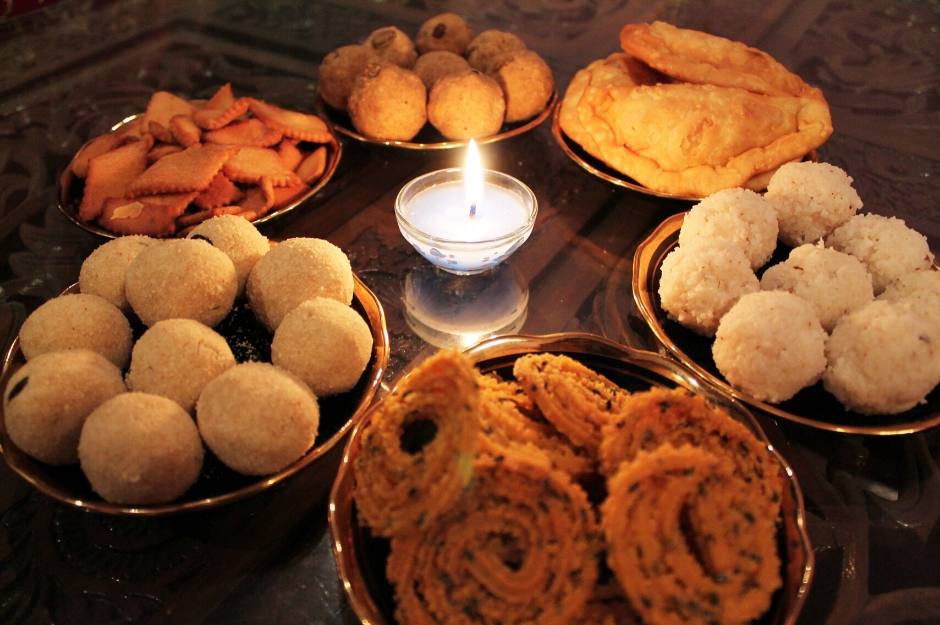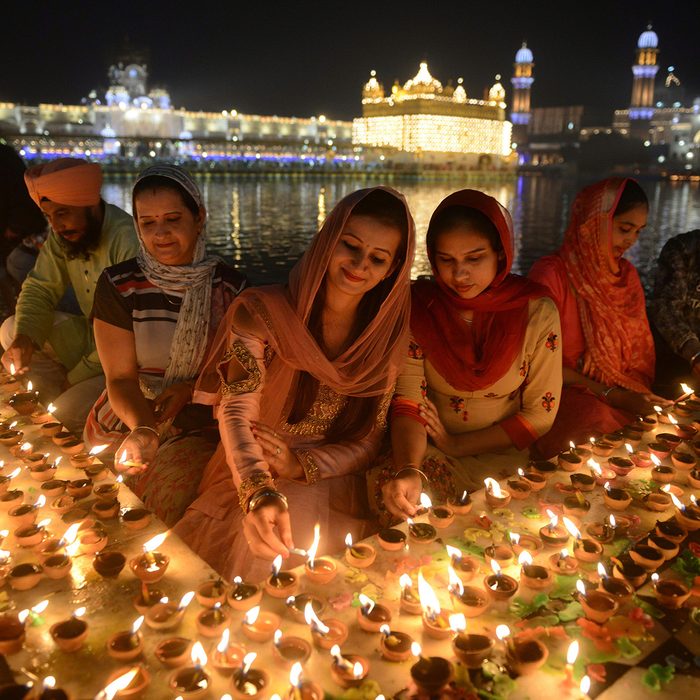Diwali
DATE
Dates vary based on Hindu calendar Annual five-day festival typically in October or November, which begins on the new moon
HOLIDAY TYPE
Cultural and religious holiday (Hindus, Jains, Sikhs & some Buddhists)
OBSERVED BY
Celebrated in India and across the world (Canada, England, Fiji, Guyana, Indonesia, Malaysia, Mauritius, Myanmar, Nepal, Pakistan, Singapore, South Africa, Sri Lanka, Suriname, Thailand, Trinidad and Tobago & United States)

CUSTOMS & TRADITIONS
One of the most significant and popular festivals celebrated by Hindus in India, Diwali is the “festival of lights.” The whole country comes to life through an elaborate celebration that lasts for 5 days or more.
On day one, ‘Dhanteras’ Hindus clean their homes and create intricate Rangoli – designs made of colored rice, sand, or flowers, all created on the floor of the home. Dhanteras is considered the most auspicious day to buy silver coins, gold and automobiles.
On day two, Naraka Chaturdasi, Hindus awake before the sun rises, take a holy bath and then wear fresh or new clothes. They cook or buy festive dishes (especially sweets, called mithai), and share these with friends and family. On this day, they also pray for the spirits of their ancestors in the afterlife.
On day three, ‘Lakshmi Puja’ is dedicated to Goddess Lakshmi, the Hindu goddess of wealth, fortune, prosperity and the embodiment of beauty. Families wear their best new clothes and then gather to commemorate new beginnings on this main day of Diwali by lighting lanterns, candles and diyas (clay lamps) in their homes, in the streets, and in areas of worship. They even set diyas afloat on lakes and rivers. Hindus end this night by setting off fireworks, said by some to ward off evil spirits.
On the fourth day, Govardhan Puja, traditions vary but a common theme is the bond between husband and wife, so husbands often buy their spouses gifts to celebrate.
On the fifth day, ‘Bhai Dhooj’ puts the spotlight on the bond between siblings, particularly between brothers and sisters. Women and girls often pray for the long and prosperous lives of their brothers.
TRADITIONAL FOOD & DRINKS
Diwali is highly anticipated by Hindus, for both its festive traditions and culinary delights. Beginning October, the shops and streets teem with both savory and sweet treats which mark the onset of the Diwali season. Indian sweets, or “mithai”, are different from candies and desserts you might find in other countries, as they are often considered more sweet meats. Many Indian sweets use nuts or vegetables as a base, condensed with added sugar and sometimes even milk. They are often served with a cup of masala chai tea, as snacks, or on their own after meals.
Desserts: Kheer, a rice pudding infused with cardamom, (and very often) raisins, almonds and saffron. Other sweet favorites are “Halwa” (gajar (carrot) halwa or pumpkin halwa) typically made with a grated vegetable cooked with ghee, sugar and milk/condensed milk, “Laddus (or laddoos)” which are little balls made with flour, ghee or oil and sugar and often nuts or dried fruit, “Barfi” which is a kind of fudge made with condensed milk, “Gulab jamun,” similar to donut holes served in a sweet syrup, “Gujia,” a sweet deep-fried dumpling, made with semolina or flour stuffed with a mixture of sweetened khoya and dried fruits, fried in ghee, and “Soan papdi” a cube-shaped dessert that has a crispy and flaky texture. Savoury treats include ”Chivda”, a mix like Bombay mix, combining nuts and chickpea/lentil/rice-based crunchy salted snacks.




HOLIDAY HISTORY
Hindus around the world celebrate Diwali, India’s biggest holiday. It is also known as Deepavali, Deepawali, Dewali, Dipavali, or the Festival of Lights, and dates back to ancient times in India. The festival gets its name from the row (avali) of clay lamps (deepa) that Indians light outside their homes to symbolize the inner light that protects from spiritual darkness. It is believed to have evolved as a fusion of the many harvest festivals. Diwali is mentioned in Sanskrit texts as early as the 1st millennium BC and various texts later, including those of historians and travelers from Persia and beyond.
Diwali celebrates the victory of light over darkness, good over evil, and knowledge over ignorance. The story of Diwali is interpreted differently based on what region you are from in India. In the south, some historical references link it to an ancient legend that celebrates the goddess Lakshmi Puja’s birthday on the new moon. In northern India, the festival marks Lord Rama’s return to Ayodhya after defeating Ravana by lighting up houses with diyas, decorating the entire city, and lighting fireworks. In the west, Diwali coincides with the New Year, so many pray to Lakshmi, the Hindu goddess of wealth, for prosperity in the coming year.
A national holiday, Diwali is celebrated by several non-Hindi communities in India too. In Jainism, Diwali marks the nirvana, or spiritual awakening, of Lord Mahavira on October 15, 527 B.C.; in Sikhism, it honors the day that Guru Hargobind, the Sixth Sikh Guru, was freed from imprisonment. Buddhists in India celebrate Diwali as well.


